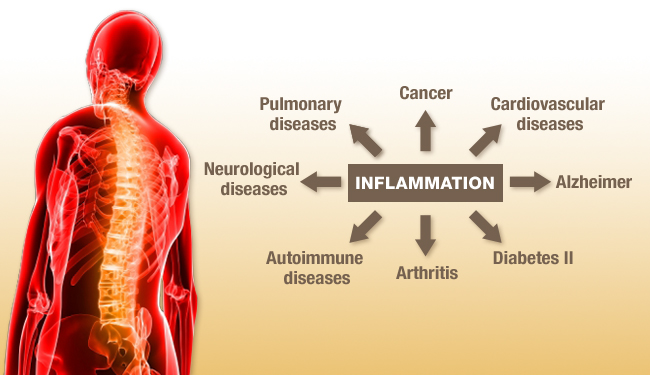Healthy Weight Loss and parasites
Healthy Weight Loss and parasites-Can this work?
parasites are entirely dependent to their host for survival, this makes them drain the excess calories and nutrients hence weight loss.Parasites are living organisms that depend on their host for daily living. They do not produce their own food but relay on their host for everything. The common parasites are tapeworms. They are flat segmented worms that live in the intestines of some animals. Animals can become infected with these parasites when grazing in pastures or drinking contaminated water.
Eating undercooked meat from infected animals is the main cause of tapeworm infection in humans. Although tapeworms in humans, usually cause few symptoms and are easily treated, they can sometimes cause serious, life threatening problems. That’s why it’s important to recognize the signs and symptoms of tapeworms and know how to protect yourself and your family
Healthy Weight Loss and parasites- Signs and symptoms of Parasites (tapeworms)
Most worm infestations cause any or all of these symptoms: diarrhea, perhaps with blood; weight loss; dry hair; general poor appearance; and vomiting, perhaps with worms in the vomit.
Healthy Weight Loss and parasites-Understanding how parasites may be of help.
Despite the extreme “gross” factor of tapeworms, some people have suggested that acquiring one intentionally would be a relatively simple way to lose weight. In fact, tapeworm pills may have been sold as weight-loss aids in the past.
In some ways, it seems to make a certain amount of sense that is, if you can get past the gross out factor. If a tapeworm is absorbing your body’s nutrients and calories, you can eat all you want and enjoy the test. Then the worm diverts it all before it hits your waistline, right? The body gains more weight among other reasons is through the kind of food we feed on and human habits of feeding themselves.
Since parasites are dependents to the host and cannot fend for themselves, they will be there to absorb the excess calories and food nutrient which your body could not contain that would have otherwise resulted in weight gain and eventually development of obesity. Much as it may look strange, this direction of understanding is practical. I know that these parasites should be eradicated from the body; they are not in any way organism to be accommodated in the body however for this one reason of consuming what the body may not need one or two of the parasites may be necessary.
This may not be a good way of eliminating the excess body weight, but in all things we have or do, there will be merits and demerits. To help us understand the merits better, let us look at the case study research by a researcher at the University of Manchester, in this research Mice were infected with a worm called Trichinella spiralis in the study
Healthy Weight loss following infection with intestinal worms is the body’s way of fighting off the parasites, University of Manchester researchers have said.
The immune system hijacks a hormone that controls when to stop eating, their study of mice suggests. This then triggers the type of immune response needed to expel the worms from the gut. The finding could lead to new ways to treat people with intestinal worms, researchers say.
Researchers first saw a potential link when they were measuring levels of a hormone called cholecystokinin in volunteers after they had been fed a meal. One man had incredibly high levels and on further investigation it was found he had an intestinal worm infection he had picked up on holiday.
Joining forces with a team specializing in gut worm infections the researchers did a study in mice infected with a worm called Trichinella spiralis.
Naturally you would think that if you are losing weight you are going to have less energy to fight off infection. But they found out that immune cells called T-cells responded to the worm infection by driving up levels of cholecystokinin. This increase has a knock-on effect of driving down another hunger hormone, leptin, which influences what type of immune response the body needs to produce.
When they artificially added leptin back into the infected mice, the immune system mounted the wrong response and the intestinal worms remained in the gut for longer. As we said before these organisms should not be in the body but for this particular reason there were some merits, however where the parasite is not helpful and causes health problems immediate treatment should follow.
Healthy Weight Loss and parasites-Treatment Options
Healthy Weight Loss Drug Therapies
Your health care provider will choose the drug that is most effective against your intestinal parasite. You may need one dose, or you may have to take the medication for several weeks. Be careful to take the medicine exactly as it is prescribed, or it may not work.
Healthy Weight Loss Complementary and Alternative Therapies
Conventional medical treatments can get rid parasites more quickly and with fewer side effects than most alternative treatments. Alternative treatments may be helpful along with conventional medications. However, your health care provider must find out what kind of organism is causing your problems before you start treatment. The following nutritional guidelines may help keep parasites from growing.
Healthy Weight Loss Nutrition and Supplements
- Avoid simple carbohydrates, such as those found in refined foods, fruits, juices, dairy products, and all sugars, except honey.
- Eat more raw garlic, pumpkin seeds, pomegranates, beets, and carrots, all of which have been used traditionally to kill parasites. In one study, researchers found that a mixture of honey and papaya seeds cleared stools of parasites in 23 out of 30 subjects. Drink a lot of water to help flush out your system.
- Eat more fiber, which may help get rid of worms.
- Probiotics (Lactobacillus acidophilus, Lactobacillus planetarium, Saccharomyces boulardii, and bifidobacteria help keep your digestive tract healthy. Probiotics may not be appropriate in some severely immune compromised patients. Talk to your doctor.
- Digestive enzymes will help restore your intestinal tract to its normal state, which makes it inhospitable to parasites. Papain is an enzyme from the papaya plant that may help kill worms when taken 30 minutes before or after meals.
- Vitamin C supports the immune system. Lower the dose if diarrhea develops.
- Zinc (20 – 30 mg per day) — also helps support the immune system. Zinc may interact with certain medications, particularly some antibiotics, and it may not be appropriate for people with HIV/AIDS. Talk to your doctor.
Healthy Weight Loss Herbs
Herbs are a way to strengthen and tone the body’s systems. As with any therapy, you should work with your health care provider to diagnose your problem before starting any treatment. You may use herbs as dried extracts (capsules, powders, teas), glycerites (glycerine extracts), or tinctures (alcohol extracts). People with a history of alcoholism should not take tinctures.
Many of the herbs used to treat intestinal parasites have toxic side effects or interfere with other medications. Use them only under the supervision of a qualified practitioner. Your health care provider should treat you with the gentlest herb that is effective for the type of parasite you have. A few of the herbs that your health care provider might consider include:
- Garlic (Allium sativum)
- Barberry (Berberis vulgaris)
- Goldenseal (Hydrastis canadensis)
- Oregon grape (Berberis aquifolium)
Healthy Weight Loss Homeopathy
As with other treatments, your health care provider must first diagnose the kind of parasite you have. Before prescribing a remedy, homeopaths take into account a person’s constitutional type — your physical, emotional, and intellectual makeup. An experienced homeopath assesses all of these factors as well as any current symptoms when determining the most appropriate remedy for a particular individual. The following remedies may be used:
- Cina
- Cuprum oxidatum nigrum
- Indigo
- Teucrium
Healthy Weight Loss and parasites-Can this work?









 Obesity in America: Safe Rapid weight loss, Obesity is preventable
Obesity in America: Safe Rapid weight loss, Obesity is preventable




















